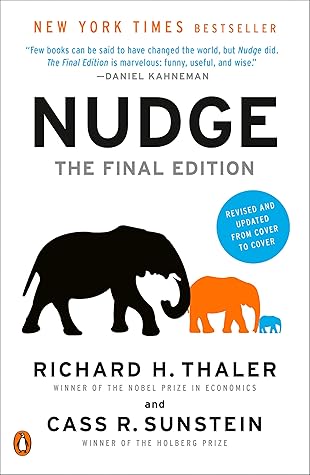More on this book
Community
Kindle Notes & Highlights
In the environmental arena, two broad approaches have been proposed. The first is to impose taxes or penalties on those who pollute. A tax on greenhouse gas emissions is one example.
The second approach is called a cap-and-trade system. With cap-and-trade, those who pollute are given (or sold) a limited number of “rights to pollute” (the cap), and these rights are then traded in a market.
A particular advantage of a carbon tax is that it would create incentives to innovate—for example, by producing cheaper sources of energy that produce little or no carbon emissions.
In some cases taxes can be negative, such as with subsidies. The United States now subsidizes the purchase of electric cars and home solar energy systems, for example.
In theory, the tax should be equal to the “social cost of carbon,” a number that is designed to capture the damage done by a ton of carbon emissions.
Alert to present bias and loss aversion, policymakers (and private companies) might impose relatively low costs today, or soon, while committing to increase those costs over time.
In contrast, a cap-and-trade system starts by specifying the desired level of emissions (the cap), then allows markets to determine the price of emissions permits. If technology makes it cheaper to produce clean energy, then the price of those permits will fall. In fact, a main goal of cap-and-trade is to create an incentive to produce cleaner energy.
The more important reason we favor economic incentives to deal with this problem is that much of the behavior that needs to change is conducted by firms.
How could blunt regulations possibly work better than incentives? A starting point is that when consumers buy motor vehicles and appliances, they might not take adequate account of the potential savings, to them, of fuel-efficient vehicles or energy-efficient appliances.
And if consumers neglect the economic benefits—to them—of fuel economy or energy efficiency, then a regulatory mandate could, in principle, generate large economic benefits, far in excess of those produced by the reduction of externalities alone.
In principle, it is possible that their net benefits will actually be much higher than those of economic incentives, which will combat externalities but will not deliver consumer savings.
One illustrative example is building codes. If home builders believe (perhaps rightly) that consumers will not pay more for a more energy-efficient home, then they will under-invest in such things as insulation, which is much cheaper to include when a home is being built than later on.
Why, exactly, has the Toxics Release Inventory had such beneficial effects? A major reason is that environmentally concerned groups, and the media in general, draw attention to serious offenders, producing a kind of “environmental blacklist.”
Governments should be creating a greenhouse gas inventory (GGI), requiring disclosure by all significant emitters. The GGI would permit people to see the various sources of greenhouse gases in their communities and elsewhere and track changes over time. Seeing that list, governments could respond by considering legislative measures.
If the goal is to make the environment cleaner, a simple idea is to make the green option the easy option. And if the goal is to make it really easy, make it automatic.
We have seen that inertia is a powerful force. In addition, a green default is a kind of signal. It tells people what it is right to do. When people reject it, they might feel conscience-stricken—and evidence suggests that they often do.
we endorse what the philosopher John Rawls called the publicity principle.16 In its simplest form, the publicity principle suggests that no choice architect in the public or private sector should adopt a policy that she would not be able or willing to defend publicly.
Consider a class of regulations requiring “cooling-off periods.” The rationale is that in the heat of the moment, consumers might make ill-considered or improvident decisions. Self-control problems are the underlying concern.
Again, a cost-benefit test, looking at the benefits for those who are helped and the costs for those who are not, could be used to decide when such laws would be imposed.
If people are making stupid, myopic, or self-defeating decisions, we wouldn’t put mandates off the table.
If people’s choices impose serious harms on their future selves (consider smoking), we might want to go beyond nudges (we favor cigarette taxes and bans on smoking in restaurants).
So long as people are making informed decisions about how to live their own lives, we would favor an attitude of humility and respect—and hence a presumption in favor of freedom of choice.
The idea of incorporating behavioral science into public policy or managerial practice is starting to become as routine as doing a standard cost-benefit analysis or business plan.
Often the most important work is being done by high-level departments and ministries, or by the office of the president or the prime minister.
If one set of people is in charge of how things look and others are in charge of how they work, you end up with those door handles that you want to pull when they need to be pushed. You get built-in sludge.
We are decidedly not saying that policy designers can or should be omniscient. But they do need to think at least one step ahead about what Humans can and will do, and more important, be willing to revise the system as they see how things work. Unfortunately, inertia is a powerful force.


